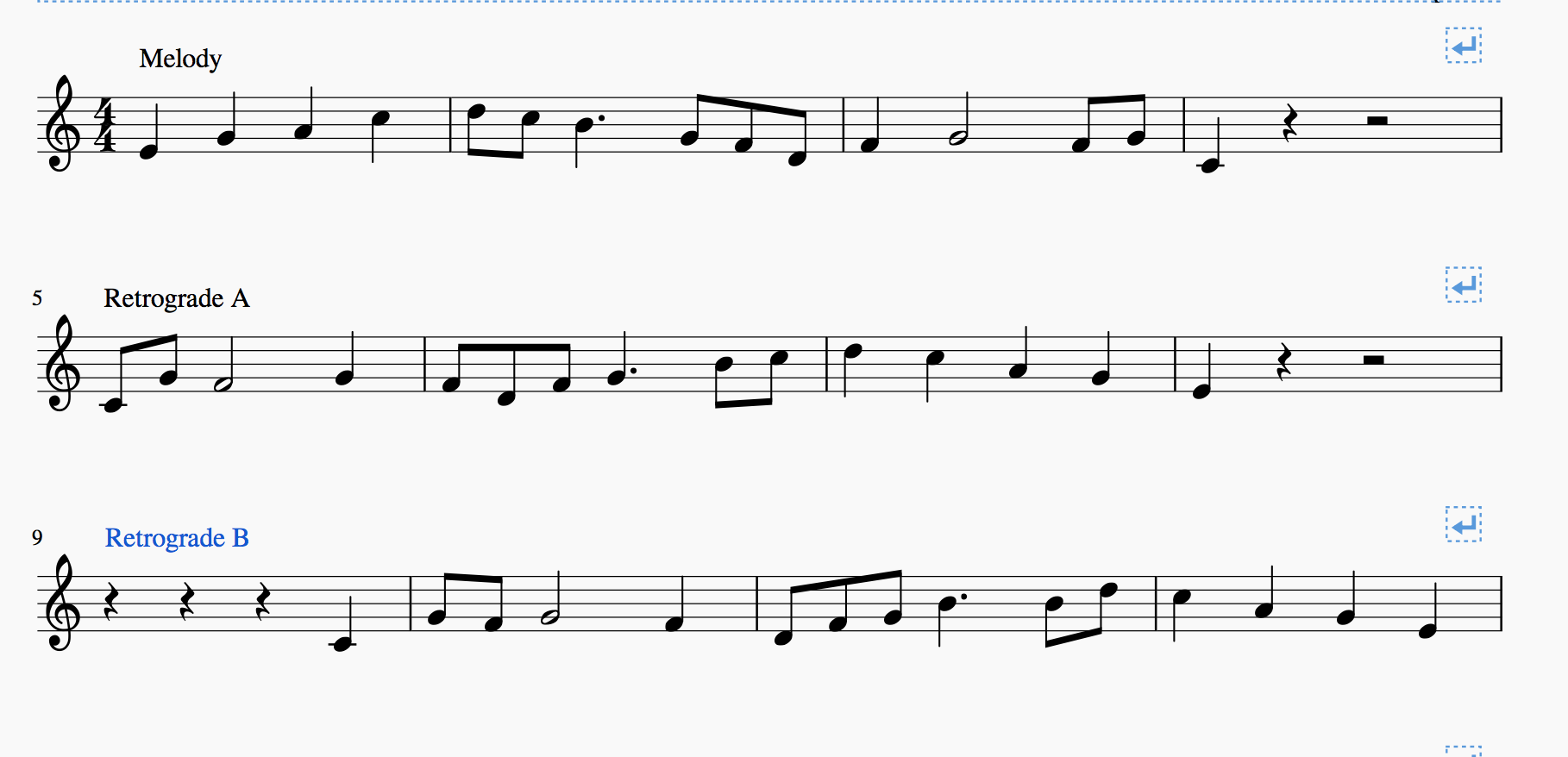If I was retrograding a melody that ends on a whole note, should I count it as a first beat quarter during reversing it or should I count it as 3 quarter rests + a quarter? I've attached an example score to show you why I am asking this question: The retrograde A maintains the timing between the notes of the original melody and retrograde B is precisely an exact reverse of the melody. I am confused because I am not sure whether the timing between the notes should remain consistent during retrograde or not :/
-
What do you mean by 'retrograding'?– TimCommented Oct 11, 2018 at 10:04
-
I mean reversing the melody.– user36492Commented Oct 11, 2018 at 10:19
-
You mean playing the whole melody backwards? In that case, a semibreve stays a semibreve, otherwise you're not doing what you want.– TimCommented Oct 11, 2018 at 10:24
-
But it seems weird to me because the time gaps between the notes, when reversed, should change as well. Let me attach an example score to show you what I mean.– user36492Commented Oct 11, 2018 at 10:26
-
2Ok, well I see what part of the confusion with your question is: you said your melody ends with a whole note, but there aren’t actually any whole notes in your melody. It ends with a quarter note, so a strict retrograde would begin with a quarter note. Where you place it in the meter is entirely up to your compositional desires. (Except for a small misprint in B) Both of your examples are perfectly fine pitch retrogrades, but only B is also a rhythmic retrograde. You could have started B on beat 1, 2 or 3 without changing that.– Pat MuchmoreCommented Oct 11, 2018 at 11:08
3 Answers
If you are working to someone's set of rules, follow them! Otherwise, I think you can allow yourself some latitude. Do whatever works.
You can use imitation, write a strict canon, or anything inbetween. Likewise with the various transformations. They can be your servant or your master. Modifing the length of a first/last note is a VERY small transgression!
-
I'm just trying to understand whether a full reversal (from modern day audio recording standards) of an audio is different from traditional concepts of retrograde because an exact retrograde wouldn't actually sound like the reverse of a motif or a subject if you come to think of it and hence I was confused whether a retrograde simply means that which is reversed on paper or that which is supposed to sound like an actual reverse audio of the melody.– user36492Commented Oct 11, 2018 at 14:14
-
-
Right? Because the attack time of the notes would be entirely different than which a full retrograde would have us notate. So retrograde isn't pure reverse right?– user36492Commented Oct 11, 2018 at 14:22
-
No. Retrogade is the notes in reverse order. Not the audio reversed. But you knew that really, I think!– LaurenceCommented Oct 11, 2018 at 14:24
The retrogrades and inversion do not have to follow the same rhythmic values. The shape comes from the interval distances, not the rhythms. When I am composing and making my personal "dictionary" of my melody and the inversion and retrogrades, I don't use note values at all. I just write dots. Then I use whatever I want from there (whole or segments) to write my piece. The inversion and retrogrades are just tools to help you find source material to write your piece, unless you are trying to follow a very specific rule (whether someone else's or your own restrictions for the piece.)
I think a simpler way to look at this is to retrograde the entire 4 bars, beginning with the 3 rests. It makes it a lot easier to conceptualise, and generally this will work for definitions of "retrograde". If you want to start on a note rather than a rest, you can shift everything over by 3 beats later.

